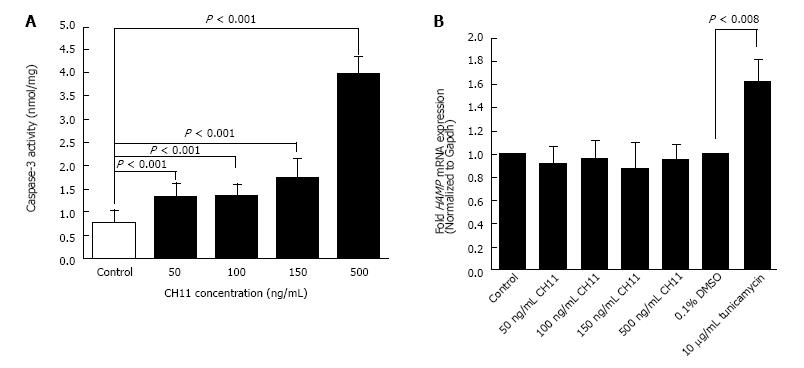Copyright
©2014 Baishideng Publishing Group Inc.
World J Biol Chem. Aug 26, 2014; 5(3): 387-397
Published online Aug 26, 2014. doi: 10.4331/wjbc.v5.i3.387
Published online Aug 26, 2014. doi: 10.4331/wjbc.v5.i3.387
Figure 1 Caspase-3 activity and human hepcidin gene (HAMP) expression: HepG2 cells were treated with 50, 100, 150 and 500 ng/mL of CH11 antibody or solvent (control) for 12 h.
A: Induction of apoptosis was confirmed by measuring caspase-3 activity, as described in the ‘Materials and Methods’ section. Caspase-3 activity was expressed as nanomole of flurogenic substrate cleaved per milligram of cell lysate protein; B: cDNA, synthesized from RNA isolated from CH11-treated, tunicamycin-treated and respective solvent-treated cells, was employed as a template in Taqman qPCR assays to determine HAMP mRNA expression, as described in Methods. HAMP expression in CH11-treated cells was expressed as fold expression of that in control cells.
- Citation: Lu S, Zmijewski E, Gollan J, Harrison-Findik DD. Apoptosis induced by Fas signaling does not alter hepatic hepcidin expression. World J Biol Chem 2014; 5(3): 387-397
- URL: https://www.wjgnet.com/1949-8454/full/v5/i3/387.htm
- DOI: https://dx.doi.org/10.4331/wjbc.v5.i3.387









